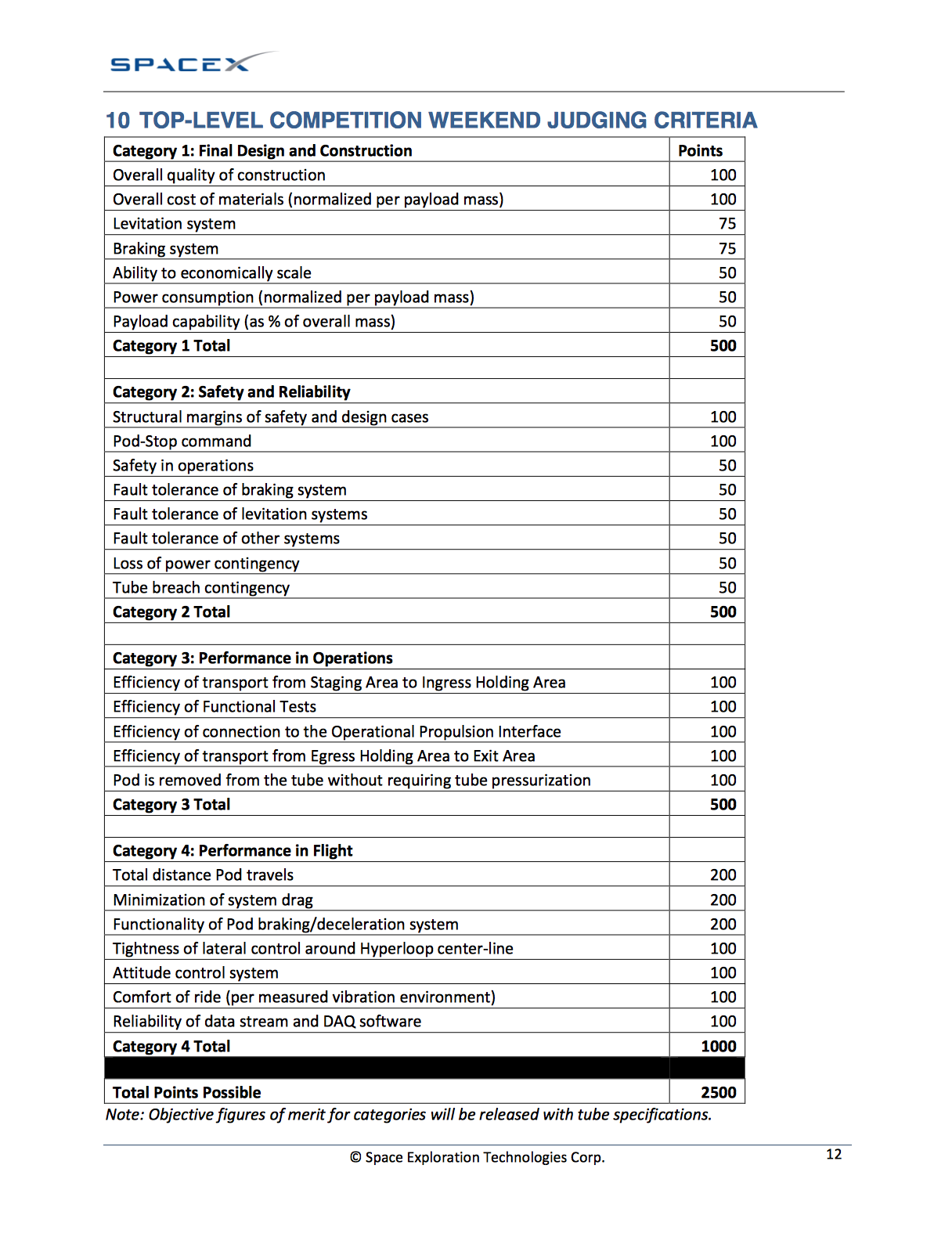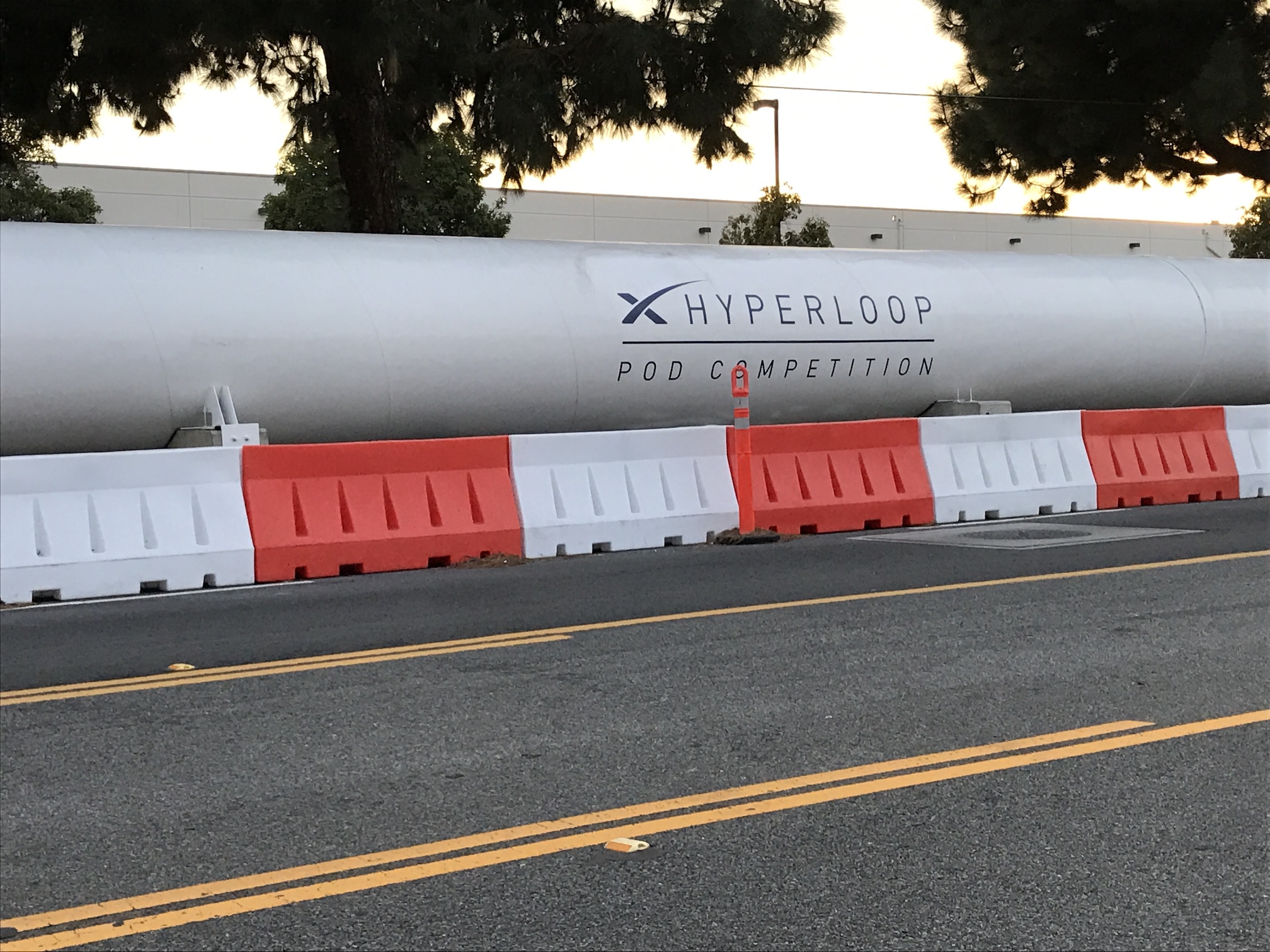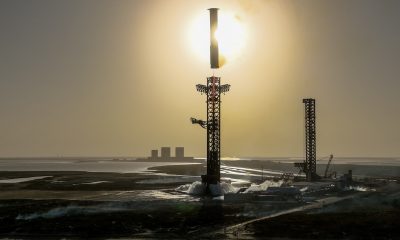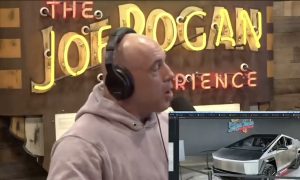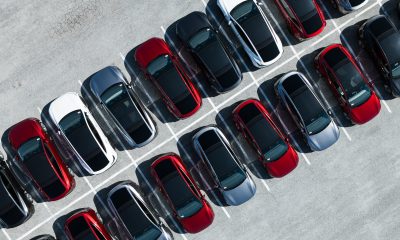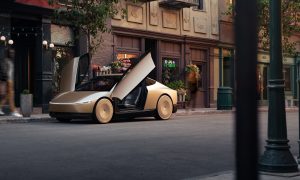News
SpaceX will host Hyperloop Pod Competition next week, Jan 27-29, 2017
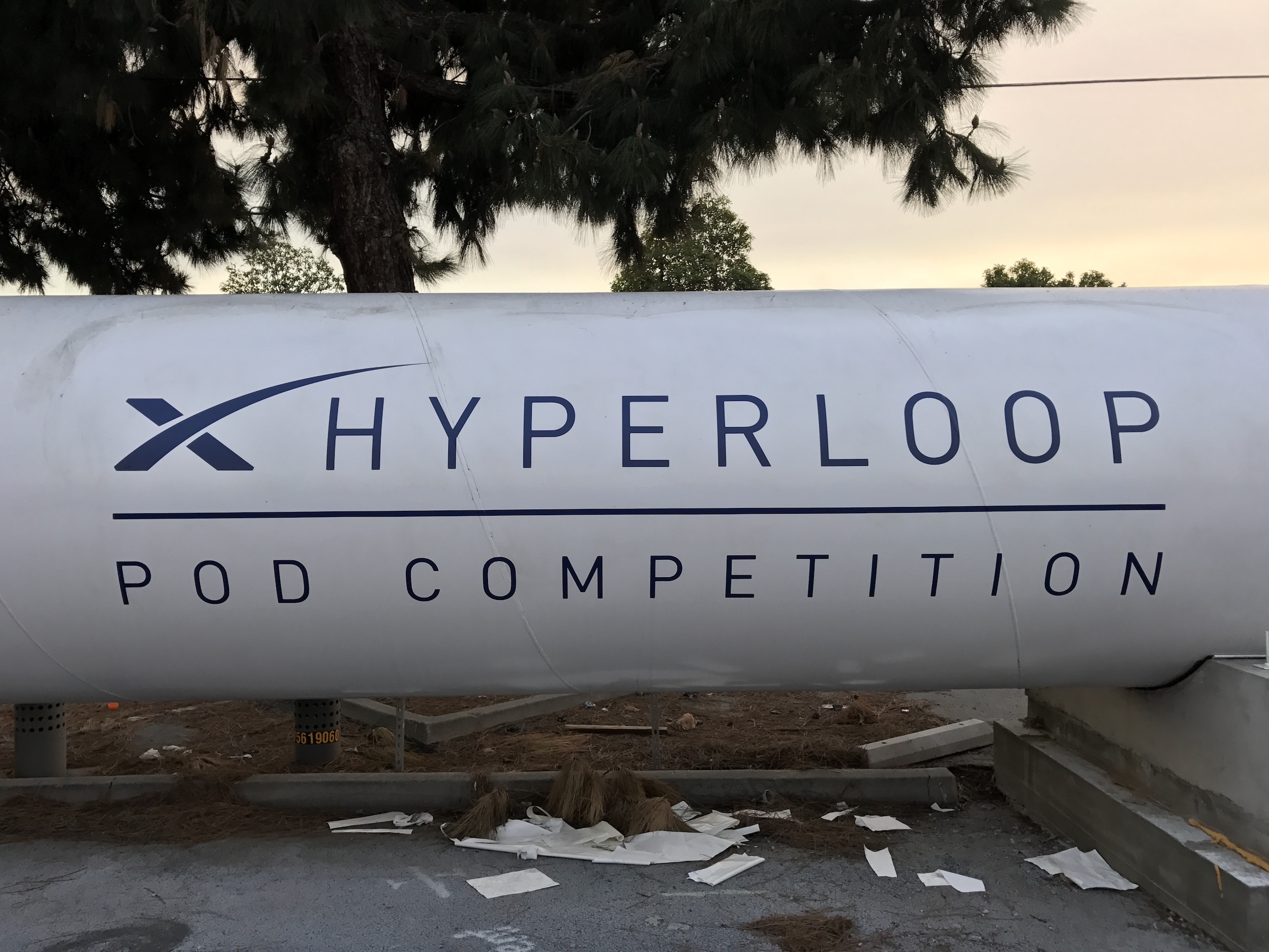
Get ready to see Hyperloop concept pods fire through the 1-mile test track located outside of SpaceX and Tesla’s Design Studio in Hawthorne, California, next week between January 27-29. Elon Musk and SpaceX first unveiled the idea for a new high-speed ground transport system called the Hyperloop on August 12, 2013 with the publication of a white paper, the Hyperloop Alpha Preliminary Design Study. SpaceX’s sponsored Hyperloop Pod Competition is an incentive prize competition created to inspire university students and independent engineering teams to design and build a subscale prototype transport vehicle (a “Hyperloop pod”) that will demonstrate technical feasibility of various aspects of the high speed transportation concept. To support this competition, SpaceX has constructed a test track outside of its headquarters which we had the opportunity to see during early construction last year.
There are three judging phases in the Hyperloop Pod competition: a design competition that was held in January 2016 and an on-track competition to be held January 27–29, 2017 (Competition Weekend I), followed by a Summer 2017 (Competition Weekend II). The original specification for the Competition Basic for the Design Weekend and the competition Weekend I, though no longer available at SpaceX, can still be found online.
DESIGN WEEKEND
The Design weekend was held in January 2016 at Texas A&M University. Awards were given in three categories:
SUBSYSTEM
Best Overall Subsystem Award: Auburn University | Auburn University Hyperloop Team.
DESIGN ONLY
Top Design Concept Award: Universitat Politècnica de Valencia | Makers UPV Team
DESIGN AND BUILD CATEGORY OVERALL
Massachusetts Institute of Technology | MIT Hyperloop Team
MIT Hyperloop Team’s design was awarded the “Best Overall Design Award”, among the 23 designs selected to move to the prototype stage. The design proposes a 250 kg (551 lb) pod with a carbon fiber and polycarbonate sheet exterior. It is elevated by a passive magnetic levitation system comprising 20 neodymium magnets that will maintain a 15 mm (0.6 in) distance above the track. The team says with air pressure at 140 Pascals, the pod could accelerate at 2.4 G and have 2 Newton aerodynamic drag when traveling at 110 m/s. The design includes a fail-safe braking system that automatically halts the pod should the actuators or computers fail, and low speed emergency drive wheels that can move the pod 1 m/s. Delft Hyperloop received a “Pod Innovation Award”, while Badgerloop at University of Wisconsin, Madison, Hyperloop at Virginia Tech, and HyperXite at UC Irvine each received a “Pod Technical Excellence Award.” The full list of Awards and news clips from the Design Weekend can be found at the Texas A&M University Engineering web site. Besides the winning teams, several other teams were invited to compete in the upcoming Competition Weekend I from the Design and Build category:
- rLoop (Non-student team)
- University of Waterloo | uWaterloo Hyperloop
- University of Washington | UWashington Hyperloop
- University of Toronto | University of Toronto
- University of Maryland and Rutgers University | RUMD Loop
- University of Florida | GatorLoop
- University of of Colorado, Denver | Team HyperLynx
- University of Cincinnati | Hyperloop UC
- University of California, Santa Barbara | UCSB Hyperloop
- University of California, Berkeley | bLoop
- Texas A&M University | TAMU Aerospace Hyperloop
- Technical University of Munich | WARR Hyperloop
- Purdue University | Purdue Hyperloop Design Team
- Oral Roberts University | Codex
- Lehigh University | Lehigh Hyperloop
- Keio University | Keio Alpha
- Drexel University | Drexel Hyperloop
- Carnegie Mellon University | Carnegie Mellon Hyperloop
In February 3, 2016 eight more teams advanced to Competition Weekend I.
- Cornell University + Harvey Mudd College + University of Michigan + Northeastern University + Memorial University of Newfoundland(Canada) + Princeton University | OpenLoop
- Louisiana State University | Bayou Bengals
- New York University | NYU Hyperloop
- RMIT University | VicHyper
- John’s High School | HyperLift
- University of Illinois at Urbana-Champaign | Illini Hyperloop
- University of Southern California | USC Hyperloop
- University of Wisconsin, Milwaukee | Mercury Three
In the end, 30 of the 115 teams that submitted designs in January 2016 were selected to build hardware to compete in Competition Weekend I. There were more than 1,000 applicants at earlier stages of the competition.
JUDGING CRITERIA
Originally, the second Phase of the competition was supposed to involve competitive runs in the Hyperloop test track to be awarded based on various classes (fully functional pod, susbsystem test pod, etc.) and pod mass. This phase of the competition was renamed“Competition Weekend I,” when SpaceX added a third phase of the competition, Competition Weekend II. The original SpaceX Hyperloop Pod Competition – Rules and Requirements for Weekend I can be seen at the end of this article. We’ve embedded a copy of the original document from SpaceX.
The Judging Criteria are listed in the document, and involve scoring in 4 different categories, for a maximum overall total of 2500 points.
- Category 1: Final Design and Construction (500 points)
- Category 2: Safety and Reliability (500 points)
- Category 3: Performance in Operations (500 points)
- Category 4: Performance in Flight (1000 points)
HYPERLOOP TEST TRACK
AECOM, a company that has designed and built some of the world’s most impressive transportation systems, was selected to design and build the world’s first Hyperloop test track as part of the pod competition hosted by SpaceX
The track is a straight one-mile run on Jack Northrop Avenue, between Crenshaw Blvd. and Prairie Ave. The SpaceX Hyperloop test track — or Hypertube — was designed in 2015 and was constructed in the fall 2016, reaching its full length of one mile by October 2016. The test track’s six-foot diameter steel tube includes a non-magnetic sub-track and said to be capable of achieving 99.8 percent vacuum. The test track itself is also a prototype, where SpaceX anticipates learning from the design, build process and evaluates how to apply automated construction techniques to future Hyperloop tracks.
The Hypertube test track is designed to enable competitors who implement a wide array of designs and build pods that will test a variety of subsystem technologies that are important to new vehicle transport systems. This will include Hyperloop-specific pods—with air-bearing suspension and low-pressure compressor designs—as well as wheeled vehicle and magnetic levitation rail designs that will support a wide array of vehicle technologies to be tested. While the Design Weekend held at Texas A&M University was open to the public, it is unclear if the Competition Weekend I will be as well, or if it will be an invitation only event like many of the SpaceX and Tesla events. Several inquiries for tickets posted to the Twitter account of the Hyperloop Pod Competition went unanswered. The Official SpaceX Hyperloop Pod Competition page does not shed any light on who will be able to attend either.
HYPERLOOP POD COMPETITION II
According to SpaceX, “based on the high-quality submissions and overwhelming enthusiasm surrounding the competition, SpaceX is moving forward with a second installment of the competition: Hyperloop Pod Competition II, which will culminate in a second competition in Summer 2017 at SpaceX’s Hyperloop test track. Hyperloop Competition II will be focused on a single criterion: maximum speed. The second competition is open to new student teams interested in competing on the test track, as well as to existing student teams who have already built and tested Pods to further refine their designs.” The Competition Weekend II event will be held in the Summer 2017 at the same SpaceX Hyperloop test track.
[pdf-embedder url=”http://www.teslarati.com/wp-content/uploads/2017/01/spacex-hyperloop-competition-rules.pdf”]
Elon Musk
Tesla doubles down on Robotaxi launch date, putting a big bet on its timeline
Tesla continues to double down on its June goal to launch the Robotaxi ride-hailing platform.
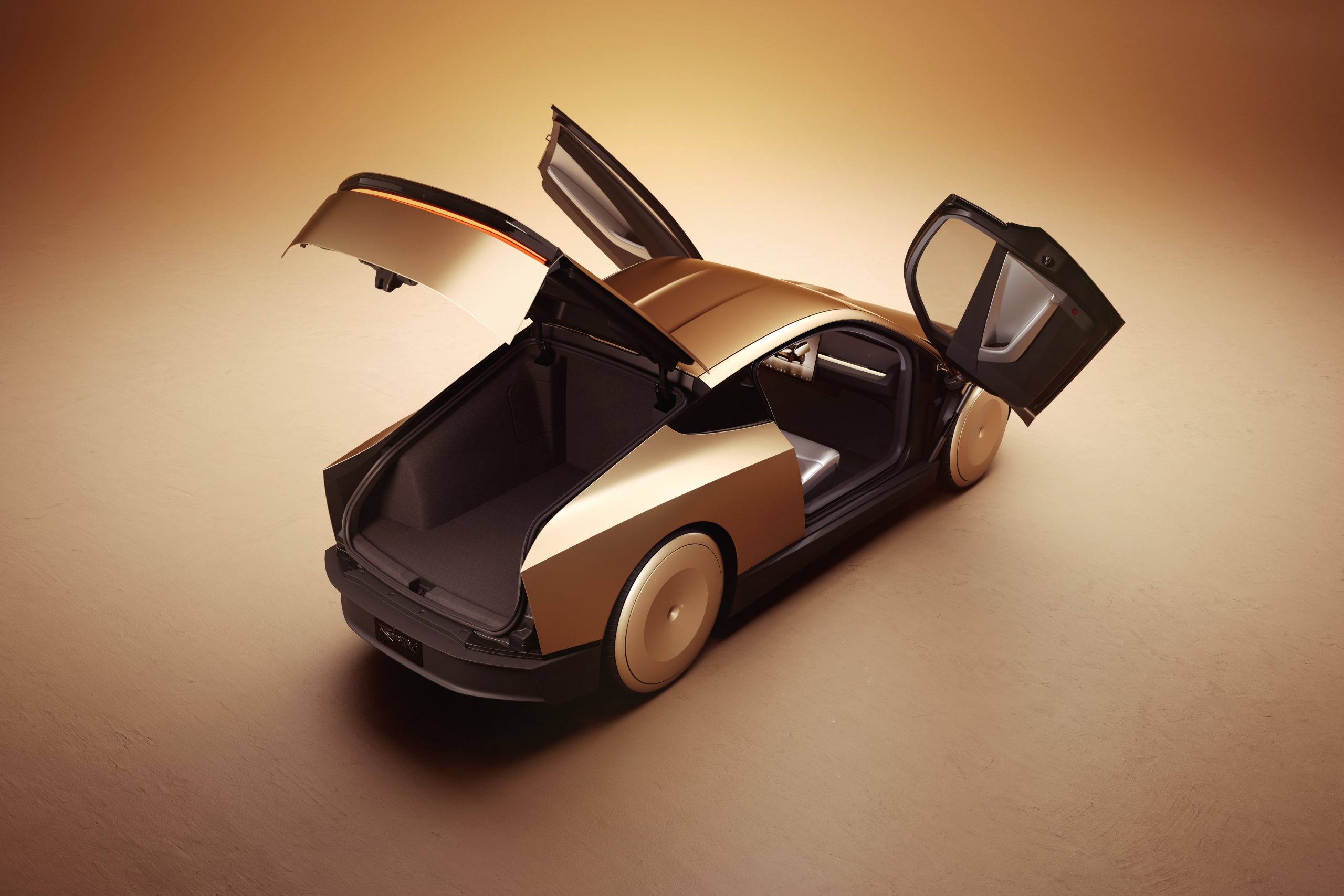
Tesla has doubled down on its potential launch date for the Robotaxi ride-hailing platform, which will utilize the Cybercab and other vehicles in its lineup to offer driverless rides in Austin, Texas.
Tesla said earlier this year that it was in talks with the City of Austin to launch its first Robotaxi rides, and it planned to launch the platform in June.
This has been a widely discussed timeline in the community, with some confident in the company’s ability to offer it based on the progress of the Full Self-Driving suite.
However, others are skeptical of it based on Tesla’s history of meeting timelines, especially regarding its rollout of FSD.
Nevertheless, Tesla was asked when it would be able to offer Robotaxi rides and where, and it clearly is not backing down from that June date:
In Austin, 🔜
— Tesla (@Tesla) April 18, 2025
It is getting to a point where Tesla is showing incredible confidence regarding the rollout of the Robotaxi in June. We have not seen this kind of reiteration regarding the rollout of something regarding autonomy from Tesla at any point in the past.
CEO Elon Musk has even been increasingly confident that Tesla will meet its target. Earlier this week, he said the vehicles will be able to roll off production lines and drive themselves straight to a customer’s house:
Elon Musk continues to push optimistic goal for Tesla Full Self-Driving
There could be some discussion of an acceptable grace period, as the timeline for the Robotaxi rollout could still be considered a success, even if it were a month or two late. However, if it were pushed back further into 2025 or even 2026, skepticism regarding these timelines would continue to persist.
As of right now, it seems Tesla is extremely confident it will meet its goal.
Elon Musk
Tesla Semi fleet from Frito-Lay gets more charging at Bakersfield factory
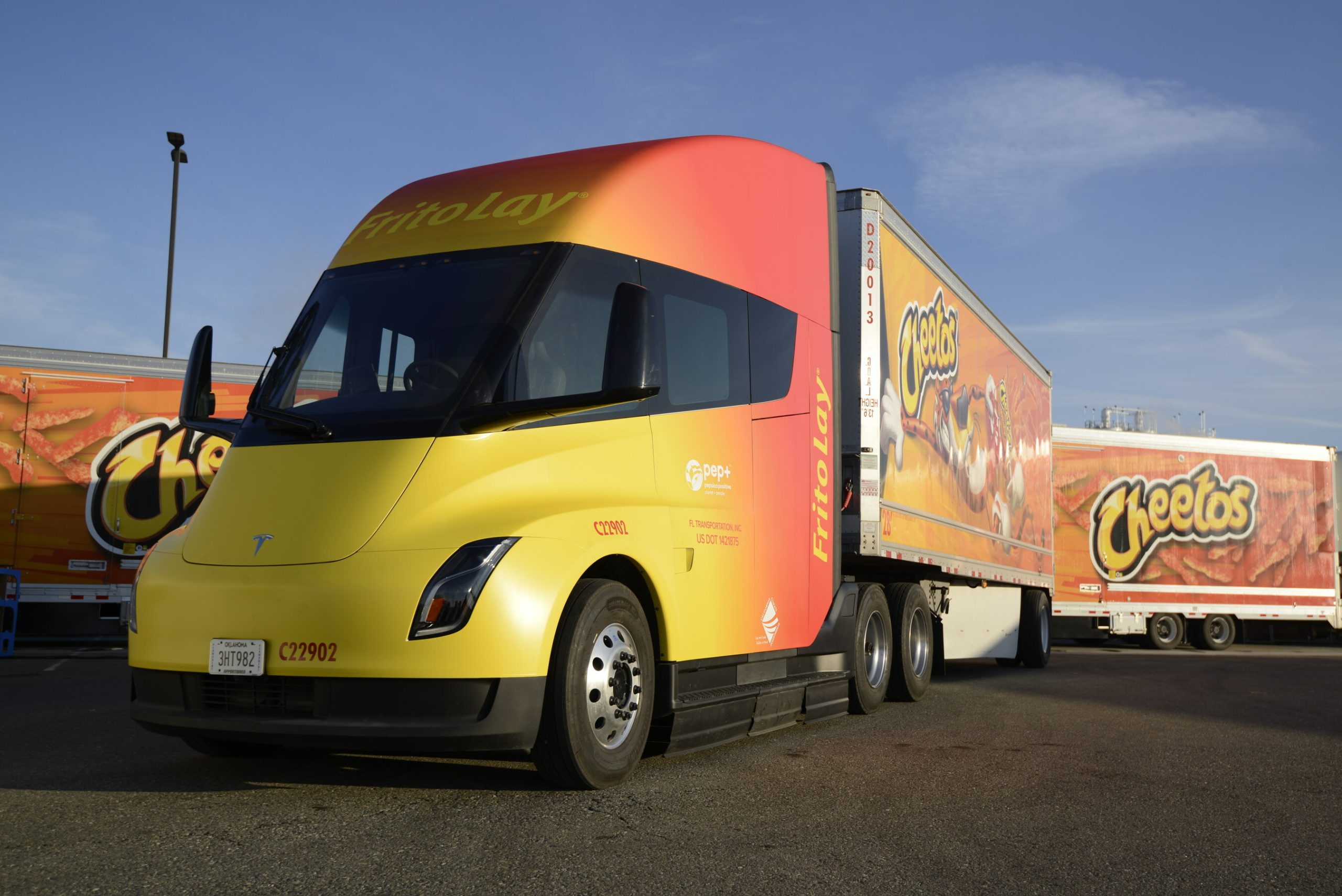
Among the several companies that have had the opportunity to add Tesla Semi all-electric Class 8 trucks to their fleets earlier than others, the most notable is arguably Frito-Lay, which has utilized the vehicle for a couple of years now.
However, as their fleet is making more local runs and there are undoubtedly plans to expand to more Semi units, the company has recognized it needs additional Megachargers to give juice to their trucks.
As a result, Frit-Lay decided to build more chargers at their Bakersfield, California facility, according to new permits filed by Tesla:
🚨 Frito-Lay is building an 8-stall Megacharger array at its factory in Bakersfield, California https://t.co/qARfJjogXF pic.twitter.com/gvorIVxsoc
— TESLARATI (@Teslarati) April 18, 2025
There are already chargers at the company’s Modesto, California, factory, but Bakersfield is roughly three hours south of Modesto.
Interestingly, Tesla is calling the chargers “Semi Chargers” in the filing, potentially hinting that it is no longer referring to them as “Megachargers,” as they have been in the past. This is a relatively minor detail, but it is worth taking note of.
In 2022, Frito-Lay began installing these chargers in preparation for the Semi to become one of the company’s main logistics tools for deliveries in California and surrounding states.
Frito-Lay is not the only company that has chosen to utilize the Tesla Semi for these early “pilot” runs. PepsiCo has also been a company that has used the Semi very publicly over the past two years.
Additionally, the Tesla Semi participated in the Run on Less EV trucking study back in late 2023, where it managed to complete a 1,000-mile run in a single day:
Tesla Semi logs 1,000-mile day in Run on Less EV trucking study
Tesla is planning to ramp production of the Semi late this year. On the Q4 2024 Earnings Call, VP of Vehicle Engineering Lars Moravy said the company would be focusing on the first builds of the Semi’s high-volume design late this year before ramping production in the early portion of 2026:
“We just closed out the Semi factory roof and walls last week in Reno, a schedule which is great with the weather. In Reno, you never know what’s going to happen. But we’re prepping for mechanical installation of all the equipment in the coming months. The first builds of the high-volume Semi design will come late this year in 2025 and begin ramping early in 2026.”
Tesla will build these units at a new Semi production facility located in Reno near its Gigafactory. The company is getting closer to finishing construction, as a drone video from this morning showed the facility is coming along at a good pace:
🚨Tesla Semi factory progress update: pic.twitter.com/dlzIjKwfT3
— TESLARATI (@Teslarati) April 18, 2025
News
Tesla Cybercab no longer using chase vehicles in Giga Texas
Elon Musk expects Tesla to produce about 2 million Cybercab units per year.
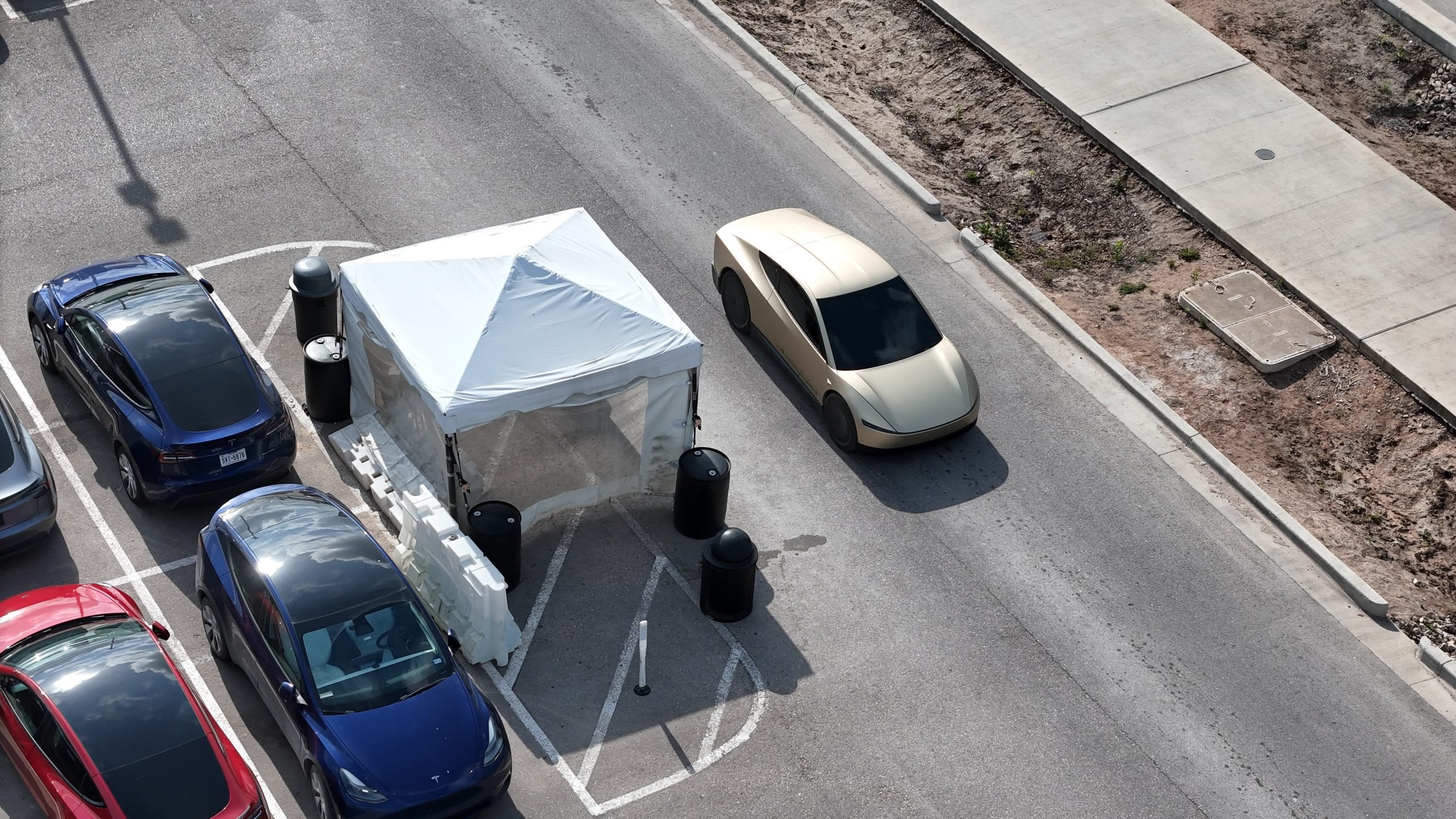
The Tesla Cybercab is the company’s first vehicle that is designed solely for autonomous driving. And while the spacious two-seater is expected to start volume production in 2026, the vehicle’s development seems to be moving at a steady pace.
This was hinted at in recent images taken by a longtime Tesla watcher at the Giga Texas complex.
Tesla Cybercab Production
The Cybercab will likely be Tesla’s highest volume vehicle, with CEO Elon Musk stating during the company’s Q1 2025 All-Hands meeting that the robotaxi’s production line will resemble a high-speed consumer electronics line. Part of this is due to Tesla’s unboxed process, which should make the Cybercab easy to produce.
Elon Musk expects Tesla to produce about 2 million Cybercabs per year. And while the vehicle is expected to see volume production at Giga Texas next year, the CEO noted that the vehicle will be manufactured in more than one facility when it is fully ramped.
No More Chase Cars
While the Cybercab is not yet being produced, Tesla is evidently busy testing the vehicle’s fully autonomous driving system. This could be hinted at by the Cybercabs that have been spotted around the Giga Texas complex over the past months. Following last year’s We, Robot event, drone operators such as longtime Tesla watcher Joe Tegtmeyer have spotted Cybercabs being tested around the Giga Texas complex.
At the time, videos from Giga Texas showed that the driverless Cybercabs were always accompanied by a manually driven Model 3 validation chase car. This was understandable considering that the Giga Texas complex features pedestrians, other cars, and construction areas. As per the drone operator in a recent post on social media platform X, however, Tesla seems to have stopped using chase cars for its Cybercab tests a few weeks ago.
Aggressive Tints
The reasons behind this alleged update are up for speculation, though it would not be surprising if the Cybercab’s autonomous driving system could now safely navigate the Gigafactory Texas complex on its own. Interestingly enough, the Cybercabs that were recently photographed by the drone operator featured very aggressive tint, making it almost impossible to make out the interior of the robotaxi.
This is quite interesting as other Cybercabs that have been spotted around Giga Texas were only equipped with semi-dark tints. One such vehicle that was spotted in February was even speculated to be fitted with an apparent steering wheel.
-
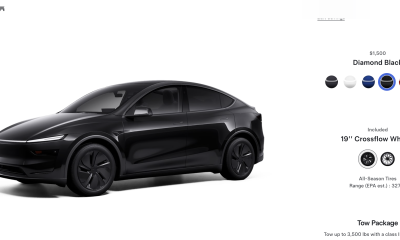
 News2 weeks ago
News2 weeks agoTesla rolls out new, more affordable trim of the Model Y Juniper in U.S.
-
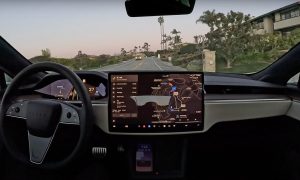
 News2 weeks ago
News2 weeks agoTesla expands Early Access Program (EAP) for early Full Self-Driving testing
-

 News2 weeks ago
News2 weeks agoTesla celebrates key milestone for 4680 battery cell production cost
-
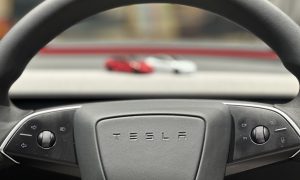
 Investor's Corner2 weeks ago
Investor's Corner2 weeks ago“Nothing Magnificent about Tesla (TSLA),” claims Jim Cramer
-
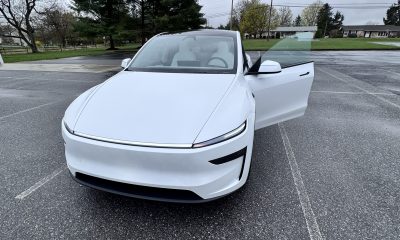
 News2 weeks ago
News2 weeks agoI took a Tesla new Model Y Demo Drive – Here’s what I learned
-
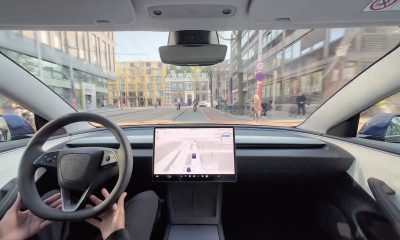
 News2 weeks ago
News2 weeks agoTesla Europe shares FSD test video weeks ahead of launch target
-
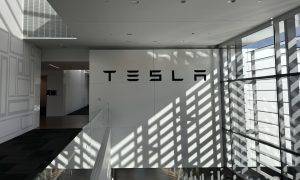
 News2 weeks ago
News2 weeks agoThis Tesla executive is leaving the company after over 12 years
-
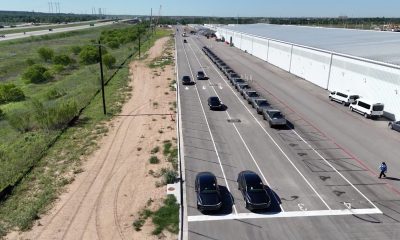
 News2 weeks ago
News2 weeks agoTesla’s Giga Texas vehicles now drive themselves to outbound lot

